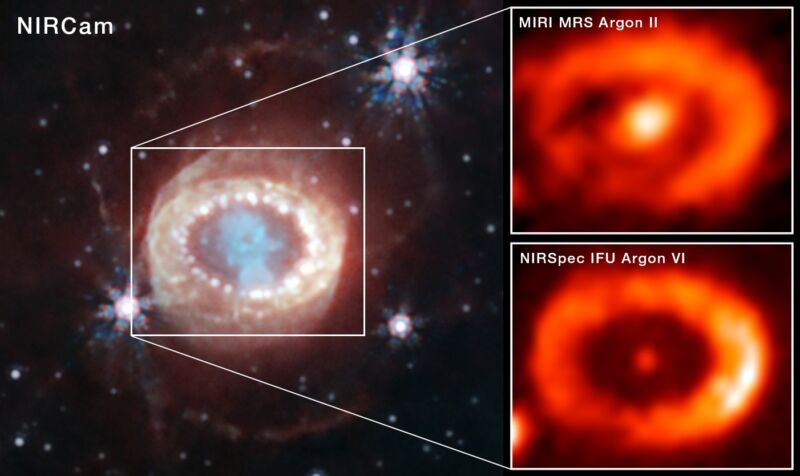
NASA, ESA, CSA, STScI, et. al.
Good morning. It’s February 26, and today’s image highlights the core of a (relatively) nearby supernova.
In the astronomy community, SN 1987A has somewhat legendary status. The first observable light from this exploding star in the Large Magellanic Cloud reached Earth in February, almost 37 years ago to the day. It was the first supernova that astronomers were able to observe and study with modern telescopes. It was still discussed in reverent terms a few years later when I was an undergraduate student studying astronomy at the University of Texas.
One of the enduring mysteries of the supernova is that astronomers have been unable to find its collapsed core, where they would expect to see a neutron star—an ultra-dense object that results from the supernova explosion of a massive star. In recent years, ground-based telescopes have found hints of this collapsed core, but now the James Webb Space Telescope has found emission lines that almost certainly must come from a newly born neutron star.
The astronomical details can be found here. It’s a nice validation of our understanding of supernovae.
I would also like to acknowledge that the Daily Telescope has been anything but “daily” of late. This is due to a confluence of several factors, including a lot of travel and work on other projects, including four features in the last month or so. I’ve had to put some things on the back-burner. I don’t want to stop producing these articles, but I also can’t commit to writing one every day. Maybe it should be renamed? For now, I’m just going to try to do my best. I appreciate those who have written to ask where the Daily Telescope has been—well, all of you except the person who wrote a nasty note.
Source: NASA, ESA, CSA, STScI, et. al.
Do you want to submit a photo for the Daily Telescope? Reach out and say hello.




















+ There are no comments
Add yours